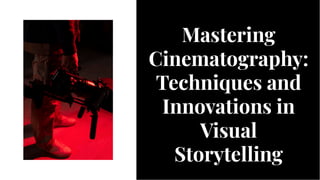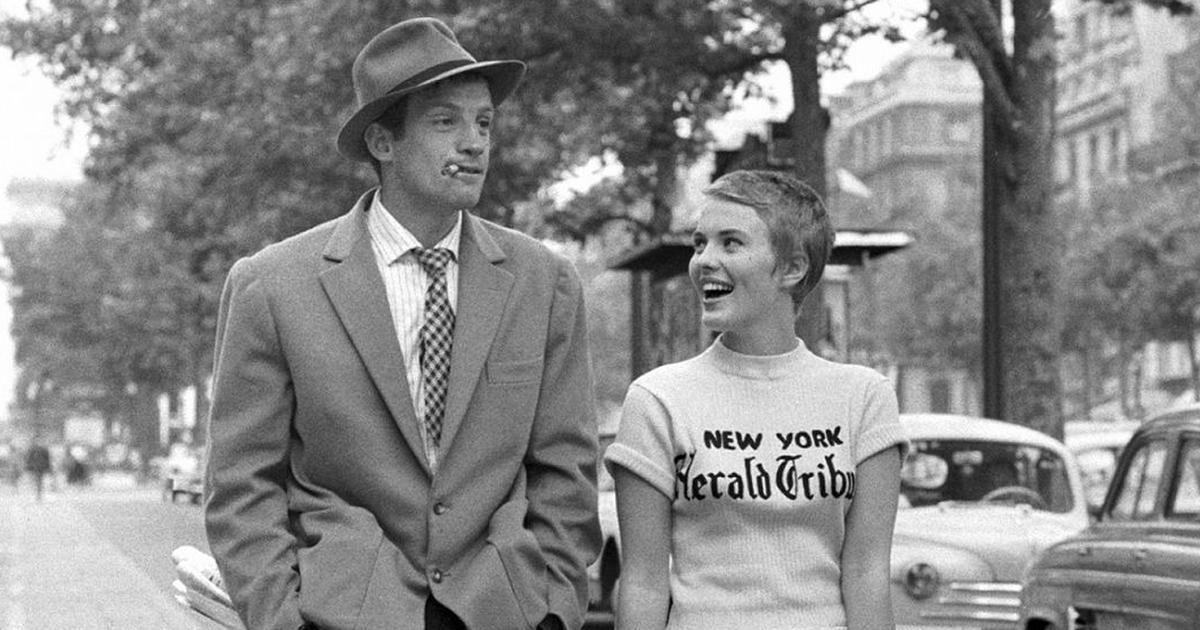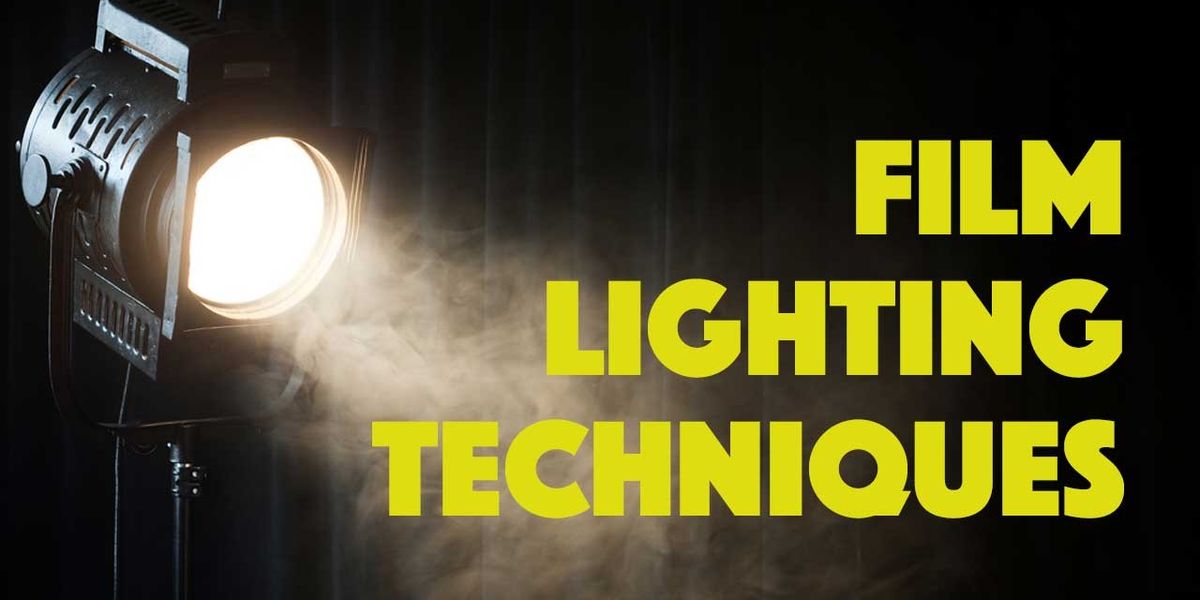The Art of Film Directing: Exploring Diverse Directing Styles
Introduction to Film Directing Styles
Film directing is the backbone of cinema, shaping narratives, performances, and visual storytelling into a cohesive artistic vision. Directors employ distinct styles that define their work, influencing how audiences experience a film. From the meticulous precision of Stanley Kubrick to the frenetic energy of Quentin Tarantino, directing styles vary widely, each offering a unique lens through which stories unfold. This article explores the most influential directing styles, their characteristics, and the filmmakers who master them.
The Auteur Theory: Directors as Visionaries
The auteur theory suggests that a director’s personal creative vision is the defining factor in a film’s artistic identity. Originating from French New Wave filmmakers like François Truffaut and Jean-Luc Godard, this perspective elevates directors to the status of authors, giving them primary authorship over their films. Auteurs often infuse their work with recurring themes, visual motifs, and distinctive stylistic choices.
Examples of Auteur Directors
**Stanley Kubrick** – Known for his obsessive attention to detail, Kubrick’s films like 2001: A Space Odyssey and The Shining are marked by symmetrical framing, long tracking shots, and haunting atmospheres. His style blends technical perfection with psychological depth.
**Wes Anderson** – Anderson’s unmistakable aesthetic features vibrant color palettes, meticulously composed frames, and quirky, deadpan humor. Films like The Grand Budapest Hotel and Moonrise Kingdom showcase his symmetrical, storybook-like direction.
Classical Hollywood Style: Invisible Storytelling
The classical Hollywood style, dominant from the 1920s to the 1960s, prioritizes seamless storytelling through continuity editing, three-act structures, and unobtrusive camerawork. Directors like Alfred Hitchcock and John Ford mastered this approach, ensuring audiences remained immersed in the narrative without noticing the filmmaking techniques themselves.
Key Elements of Classical Direction
**Continuity Editing** – Ensures temporal and spatial coherence, making transitions smooth and logical.
**Shot-Reverse-Shot** – A standard technique for dialogue scenes, maintaining audience engagement with character interactions.
**Invisible Camera** – The camera serves the story without calling attention to itself, maintaining a naturalistic feel.
Alfred Hitchcock’s Psycho exemplifies this style, where suspense is built through precise editing and framing rather than overt stylistic flourishes.
New Hollywood: Breaking Conventions
In the late 1960s and 1970s, a generation of filmmakers rebelled against classical Hollywood norms, embracing realism, improvisation, and unconventional storytelling. Directors like Martin Scorsese, Francis Ford Coppola, and Steven Spielberg revolutionized cinema with raw, character-driven narratives.
Characteristics of New Hollywood
**Naturalistic Performances** – Actors were encouraged to improvise, lending authenticity to their roles.
**Gritty Visuals** – Handheld cameras and on-location shooting replaced polished studio productions.
**Moral Ambiguity** – Films like Taxi Driver and The Godfather explored flawed protagonists and complex ethical dilemmas.
Scorsese’s signature style—dynamic tracking shots, rock music soundtracks, and unflinching violence—reflects the raw energy of New Hollywood.
Experimental and Avant-Garde Direction
Some directors reject traditional storytelling altogether, opting for abstract, nonlinear, or surreal approaches. Avant-garde filmmakers challenge audiences with unconventional techniques, prioritizing visual poetry over plot coherence.
Pioneers of Experimental Cinema
**David Lynch** – With films like Eraserhead and Mulholland Drive, Lynch blends dream logic, unsettling imagery, and fragmented narratives.
**Luis Buñuel** – A surrealist master, Buñuel’s Un Chien Andalou defies conventional meaning, using shocking visuals to provoke thought.
Experimental directors often employ jarring edits, non-diegetic sound, and symbolic imagery to create emotionally resonant, if perplexing, experiences.
Conclusion of Part One
Film directing styles are as diverse as the directors who create them. Whether through the polished control of an auteur, the seamless storytelling of classical Hollywood, the rebellious spirit of New Hollywood, or the boundary-pushing experiments of avant-garde cinema, each approach offers a different way to engage and challenge audiences. In the next section, we will delve deeper into contemporary directing trends, including digital filmmaking and hybrid styles that blend old and new techniques.
>Contemporary Film Directing: The Digital Revolution
As we move into the 21st century, filmmaking has undergone a radical transformation with the advent of digital technology. The shift from celluloid to digital cameras has democratized the filmmaking process, allowing directors to experiment with new techniques and visual styles. This section explores how modern directors are pushing boundaries with digital tools, creating hybrid styles, and redefining cinematic storytelling.
The Rise of Digital Cinematography
Digital cameras like the RED and ARRI Alexa have revolutionized the way films are shot, offering filmmakers unprecedented flexibility. Directors can now shoot in low-light conditions, achieve higher frame rates, and experiment with color grading in post-production. This technological shift has given rise to visually stunning films like Gravity and Blade Runner 2049, where digital effects and practical cinematography blend seamlessly.
Notable Directors Embracing Digital
**David Fincher** – Known for his meticulous attention to detail, Fincher has fully embraced digital filmmaking. His films, such as The Social Network and Gone Girl, showcase crisp, high-resolution visuals and precise camera movements that would be difficult to achieve with traditional film.
**Christopher Nolan** – While Nolan remains a staunch advocate of shooting on film, he has incorporated digital techniques in films like Interstellar and Dunkirk, blending IMAX footage with digital effects to create immersive experiences.
Hybrid Directing Styles: Blending Old and New
Many contemporary directors are merging classical techniques with modern digital tools to create unique visual languages. This hybrid approach allows for greater creative freedom while maintaining the emotional depth of traditional storytelling.
**Denis Villeneuve** – In films like Arrival and Dune, Villeneuve combines practical effects with digital enhancements, creating a grounded yet otherworldly aesthetic. His use of natural lighting and wide-angle shots evokes classic cinema, while digital effects expand the scope of his storytelling.
**Greta Gerwig** – Gerwig’s Little Women and Barbie demonstrate a blend of classical narrative techniques with contemporary sensibilities. Her use of digital color grading and dynamic camera movements adds a modern flair to timeless stories.
The Influence of Streaming Platforms
The rise of streaming services like Netflix, Amazon Prime, and Disney+ has also impacted directing styles. With shorter production schedules and episodic storytelling, directors working in streaming must adapt their approach to fit the medium.
**Alfonso Cuarón** – His work on Roma for Netflix showcased how streaming platforms can support ambitious, auteur-driven projects. The film’s intimate cinematography and long takes were designed to be experienced on both the big screen and at home.
**Rian Johnson** – Johnson’s Knives Out and its sequel Glass Onion were released in theaters and on streaming, demonstrating how directors can tailor their style for different viewing experiences.
Global Influences in Modern Directing
As cinema becomes more globalized, directors are drawing inspiration from diverse cultural traditions, leading to a rich cross-pollination of styles.
**Bong Joon-ho** – The South Korean director’s Parasite and Snowpiercer blend dark humor, social commentary, and genre-bending storytelling, influenced by both Hollywood and Korean cinema.
**Céline Sciamma** – The French director’s Portrait of a Lady on Fire employs a restrained, painterly style, emphasizing silence and subtlety over dialogue, a hallmark of European arthouse cinema.
The Future of Directing: AI and Virtual Production
Emerging technologies like artificial intelligence and virtual production are poised to further revolutionize directing. AI can assist in scriptwriting, editing, and even generating visual effects, while virtual production (as seen in The Mandalorian) allows directors to visualize complex scenes in real-time using LED screens.
**James Cameron** – With Avatar: The Way of Water, Cameron pushed the boundaries of motion capture and underwater filming, demonstrating how technology can expand the possibilities of storytelling.
**Robert Rodriguez** – A pioneer of digital filmmaking, Rodriguez continues to experiment with low-budget techniques and cutting-edge tech, proving that innovation doesn’t always require massive budgets.
Conclusion of Part Two
The second part of our exploration into directing styles highlights how digital technology and global influences are reshaping cinema. From the precision of digital cinematography to the fusion of classical and modern techniques, today’s directors are crafting visually stunning and emotionally resonant films. In the final section, we’ll examine the impact of social media and short-form content on directing, as well as the enduring power of a director’s personal vision in an ever-evolving industry.
The Director in the Digital Age: Social Media, Short-Form Content, and Enduring Vision
The Impact of Social Media on Directing
The rise of social media platforms like TikTok, Instagram, and YouTube has created a new generation of filmmakers who craft stories in seconds rather than hours. This shift has fundamentally altered how directors think about pacing, composition, and audience engagement in the digital era.
**Aspects of Social Media-Influenced Directing**
**Micro-Storytelling** – With attention spans shrinking, directors must convey emotion, conflict, and resolution in extremely compressed timelines. Platforms like TikTok have popularized 15-60 second narratives that require precision filmmaking.
**Vertical Framing** – Unlike traditional widescreen formats, social media videos are typically shot in 9:16 aspect ratio, forcing directors to rethink composition rules established over a century of cinema.
**Interactive Storytelling** – Features like Instagram's "Choose Your Own Adventure" stories and YouTube's branching narratives give audiences agency, creating new directing challenges for maintaining coherent storytelling.
Pioneers of the New Digital Landscape
**Wong Kar-wai** – The acclaimed director's recent work on the short film The City of Dreams for Tmall demonstrates how arthouse sensibilities can thrive in commercial digital spaces, blending his signature style with platform-specific storytelling.
**Domee Shi** – The Bao director's adaptation from viral animated shorts to feature films (Turning Red) illustrates the fluid movement between digital platforms and traditional cinema.
The Rise of Short-Form Cinema
Streaming platforms like MUBI, Short of the Week, and Vimeo Staff Picks have created lucrative spaces for short films, allowing directors to hone their craft before transitioning to features.
**Characteristics of Effective Short Film Direction**
**Economy of Visual Language** – Every frame must serve multiple purposes in character development, plot, and theme.
**Instant Engagement** – Short films demand immediate immersion, requiring directors to establish tone and stakes within seconds.
**Experimental Freedom** – The lower stakes of short formats encourage stylistic innovation, as seen in works like Thunder Road (Jim Cummings) which began as a short before becoming a feature.
The Documentary Revolution
Modern documentary filmmaking has evolved beyond the traditional "talking heads" format, incorporating narrative techniques and experimental approaches that blur the line between fiction and reality.
**Innovative Documentary Directors**
**Adam Curtis** – His collage-style films like HyperNormalisation blend archival footage with bold editorial commentary, creating hypnotic political essays.
**Elizabeth Lo** – Her canine perspective documentary Stray demonstrates how POV can fundamentally reshape non-fiction storytelling.
Diversity in Directing: New Voices, New Perspectives
The past decade has seen a significant push to amplify underrepresented voices in directing, leading to fresh storytelling approaches and visual styles.
**Groundbreaking Directors**
**Barry Jenkins** – His intimate, poetic visual language in Moonlight and If Beale Street Could Talk expands African-American cinematic representation.
**Chloé Zhao** – The Oscar-winning director of Nomadland blends documentary and fictional techniques to create deeply personal yet universal stories.
**Taika Waititi** – His Māori heritage informs the unique humor and visual storytelling in works like Hunt for the Wilderpeople and Jojo Rabbit.
The Future of Directing Education
Film schools are rapidly adapting to the changing landscape, incorporating new technologies and storytelling formats into their curricula.
**Emerging Teaching Approaches**
**Virtual Production** – Programs now include training in game engine software like Unreal Engine for real-time filmmaking
**Algorithm Aesthetics** – Some schools now offer courses examining how AI and algorithms influence shot composition and editing
**360° Filmmaking** – With VR becoming more accessible, directors must learn to think in three-dimensional space
Preserving Directional Vision in a Franchise Era
While blockbuster franchises dominate the box office, visionary directors continue finding ways to imprint their personal style on commercial projects.
**Directors Who Defy the Franchise Mold**
**Ryan Coogler** – Brought his Oakland roots and social consciousness to Black Panther while satisfying Marvel's requirements
**Patty Jenkins** – Infused Wonder Woman with emotional depth rarely seen in superhero films
**James Gunn** – Maintained his idiosyncratic voice while steering the Guardians of the Galaxy franchise
The Enduring Power of Directorial Vision
Despite technological changes and industry shifts, the director's role as creative visionary remains fundamentally unchanged. The most powerful films continue to be those where a distinct creative voice shines through all the noise.
Final Thoughts
From the silent era to the digital age, directing remains an alchemical blend of technical mastery and artistic intuition. As this exploration has shown, directorial styles constantly evolve while maintaining core principles of visual storytelling. Whether working with cellphones or IMAX cameras, virtual production or practical effects, today's directors face the same essential challenge: to move audiences by revealing truth through crafted images. The tools may change, but the director's eye for human experience remains cinema's most valuable compass.











Comments